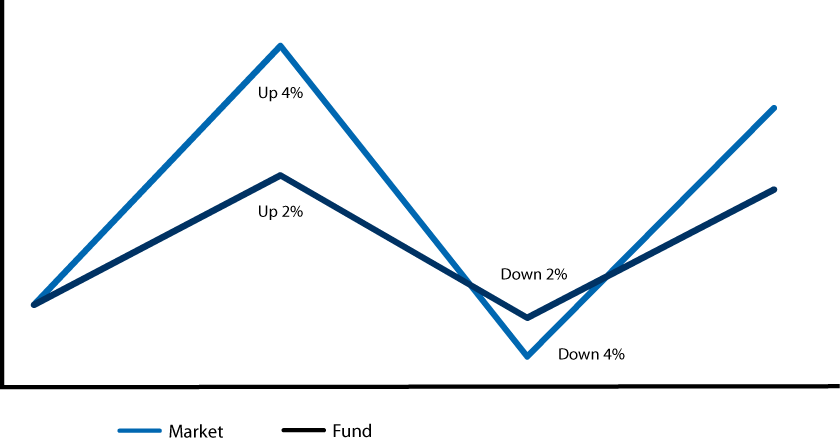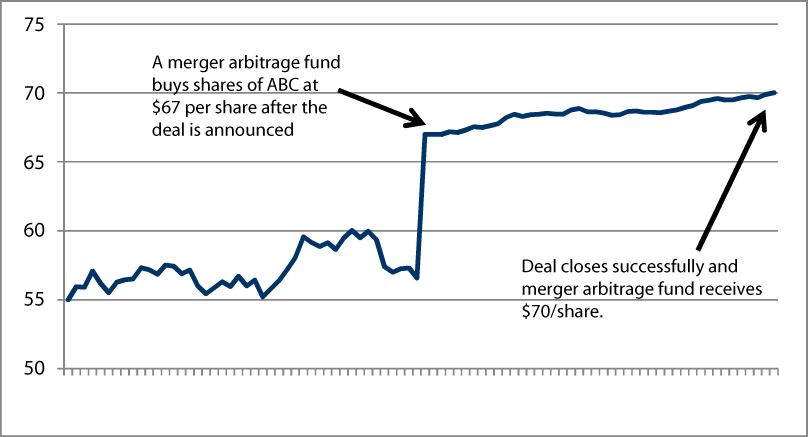Alternative Investment Strategies
Investors wonder if alternative strategies can make a significant difference in their risk and return. We take a closer look by dissecting the world of alternatives.
Presented by: Kris Maksimovich, AIF®, CRPC®, CPFA®, CRC®
In the wake of the 2008 financial crisis, mutual funds that pursue alternative investment strategies have received a lot of attention as potential diversifiers and volatility cushions for portfolios. The problem is, it can be difficult to analyze these types of funds, as well as to compare them with their peers—primarily because there are still few alternative strategy mutual funds available.
To make the landscape even more complicated, alternative funds can be incredibly different from one another.
Types of alternative funds
While the alternative investment space known as “alternatives” can be daunting, research has shown that alternative strategies can make a significant difference in the risk/return characteristics of an investment portfolio. Some of the different types of alternatives include:
- Equity long-short funds
- Equity market neutral
- Global allocation funds
- Arbitrage
- Managed futures
- Real assets
- Multi-strategy
What are alternative investments?
Before we define the alternative space, we must first define what traditional means:
Traditional investments. Traditional investments generally refer to stocks and bonds, which are securities that essentially pay investors for taking risk. In the case of stocks, equity investors have the potential to earn money over time by shouldering equity risk, or the risk that a company’s earnings will decline. In the case of bonds, fixed-income investors can potentially benefit financially from taking on the bond issuer’s credit risk, or the risk that the issuer will default on its payments. In most cases, these investors also take on interest rate risk—the risk that interest rates will rise and newly issued bonds will pay higher interest, causing the values of older bonds to decline.
Alternatives. A well-diversified portfolio has exposure to as many different risks as possible in an effort to reduce volatility during market disruptions—which is why the world of alternatives has been getting a lot of publicity lately. Remember that investing directly in alternative investments may not be suitable for everyone and involves special risks, such as risk associated with leveraging the investment, potential adverse market forces, regulatory changes, and potential illiquidity. Of course, even with alternative strategy mutual funds, there is no assurance that the investment objective will be attained.
With that in mind, how do you know whether a particular alternative strategy fund may be right for your portfolio? Let’s take a closer look at the various subcategories within the “alternatives” asset class.
Alternative Fund Diversifiers and Enhancers
Alternative strategy funds come in many different shapes and sizes. Some strategies allow investors to take on risks unrelated to the traditional risks listed above, while others are just an enhanced way to take on traditional risks. Let’s divide these two types of alternative strategies into diversifiers and enhancers.
- Diversifiers. We could look at diversifiers as alternative strategy funds that provide access to alternative betas.
- Enhancers. Enhancers would be alternative strategy funds that can potentially provide more alpha.
Put simply, beta refers to risk that investors get paid to take (equity risk, interest rate risk, etc.), whereas alpha is an additional potential return resulting from manager skill, where no additional risk was taken to achieve that return. Ideally, your portfolio should have exposure to different betas and sources of alpha (i.e., different managers and investment styles).
Alternative fund strategies
Following are descriptions of what we believe to be the defining categories in the alternative space, as well as whether they are considered diversifiers or enhancers. Keep in mind, even funds in the same subcategory can operate very differently—and each alternative strategy comes with its own unique risk—so it is extremely important that you understand a fund before investing.
Equity long/short funds — an enhancer
Equity long/short funds are similar to traditional equity funds in that the portfolio manager’s goal is to pick stocks that outperform the market. What makes equity long/short funds different is that managers can also take short positions in stocks that they believe will underperform the market.
Long vs. short positions explained. Taking a short position in a stock involves borrowing a stock and immediately selling it, with the promise to return the borrowed stock by buying it back at some point in the future. Thus, if you short a stock and that stock declines in value, you make money. Taking a long position in a stock involves simply buying and holding that stock, in which case, you realize a profit when the stock increases in value. It’s important to note that long and short positions may not be perfectly offsetting and, as such, may not effectively neutralize general market risks.

Figure 1: Hypothetical example not indicative of any actual investment.
Example of long and short positions. With a long/short fund, you end up with a basket of “longs” and a basket of “shorts,” with a net exposure to the market that is generally less than 100 percent. As a hypothetical example, a net exposure of 50 percent would mean that if the stock market went up 4 percent, the fund would go up half that amount, or 2 percent. More importantly, if the market fell 4 percent, the fund would only lose 2 percent.
Equity market neutral funds — an enhancer
Equity market-neutral funds are a subset of equity long/short funds. Whereas equity long/short funds can adjust their net exposure to the stock market based on the sizes of their long and short baskets, an equity market-neutral fund attempts to maintain a net exposure of zero at all times. In other words, it doesn’t matter whether or not the stock market goes up or down on any given day because the long basket is the same size as the short basket. All that matters is the goal that the long basket outperforms the short basket; that is the only way an equity market-neutral manager makes money.
Global allocation funds — an enhancer
Global allocation funds, as their name suggests, can search the globe for opportunity. These funds typically are not limited to stocks or bonds, and many of them can take both long and short positions. The idea behind this sort of broad mandate is that investors can outsource the tactical decision-making process (i.e., adjusting the level of risk at a particular time) to an accomplished money manager.
Arbitrage funds — a diversifier
Arbitrage funds seek growth and profit by participating in arbitrage. Arbitrage is the act of buying an asset at one price and selling it at another, at the same time, for a theoretically riskless profit; imagine going to one grocery store and buying a gallon of milk for $2 and then selling it immediately to another store for $3.
In practice, there is no such thing as a free lunch (or a riskless profit), but imagine you could sell the milk for $3 tomorrow, or one week from now. In theory, the longer one waits for the arbitrage to be completed, the more one should expect to be paid. It’s similar to what many mutual funds strive to do—buy stocks that they believe are undervalued, and that they expect to sell in the distant future for a larger sum of money—except that purchasing an undervalued company is not considered arbitrage. That’s because the company’s true future value is unknown. Arbitrage can only exist when both the purchase and sale prices are known. While there are many kinds of arbitrage, we’ll focus on merger arbitrage.
Merger arbitrage example. Merger arbitrage is the act of purchasing shares of a company that is the announced target of an acquisition and hedging the portfolio so that the arbitrageur is ambivalent to whether the stock market goes up or down. For a hypothetical example, when a deal is announced (e.g., ABC, Inc. purchasing XYZ, Inc. for $70/share), the share price of the target company (XYZ, in this case) will typically jump to an amount close to the purchase price (say, $67). A merger arbitrageur will then purchase shares of the target stock at around $67 and hold them until the deal closes to receive $70.

Figure 2: Hypothetical example of the arbitrage of a successful deal. Not indicative of any investment, and not all deals are completed successfully.
The main risk inherent in this trade is that the deal will fall through for some reason. That deal risk is usually—but not always—unrelated to the stock market (i.e., there may be regulatory hurdles involved in the deal, which may have nothing to do with the expectation of our future economy), which is what makes merger arbitrage a diversifying alternative strategy.
Managed futures funds — a diversifier
Managed futures funds trade almost exclusively in the futures markets. The most common form of managed futures fund utilizes a trend-following strategy.
Trend following strategy defined. Trend following is a relatively simple concept: Go long a security when it has been trending upward, and go short a security that has been trending downward. Trend-following is a reactionary strategy, rather than a predictive strategy; all of the information used when making buy and sell decisions is based on past data points (usually price or a derivative of price).
This strategy is interesting for two reasons:
- It is direction-agnostic—that is, it can make money whether markets are moving up or down.
- A “stop-loss” feature is inherent in each trade; when markets move from trending upward to trending downward, a trend-following strategy will eventually move from a long position to a short position, cutting losses in the process.
Trend-following seeks to take advantage of investors’ propensity for herd behavior (i.e., an investment bias when individuals imitate the behavior of a large group), and because that behavior becomes more profound during equity market drawdowns, these funds have historically done well when equity markets have not. Of course, past performance is no guarantee of future results.
Real asset funds — a diversifier
What are real asset funds? Real asset funds target the purchase and sale of real assets, including real estate, commodities, and other related sub-asset classes like infrastructure, natural resources, and precious metals. In general, these tangible assets are used as inflation protection; to a large extent, they are inflation. For example, in addition to the Consumer Price Index (CPI) and the Producer Price Index (PPI), many economists consider commodity indices a measure of inflation. Food and energy often account for a large portion of realized inflation, as measured by the CPI.
Various institutional money managers have been investing in infrastructure funds for the past 10 years to take advantage of the ongoing urbanization in Asia, specifically China. The returns of many of the holdings of infrastructure funds have been well correlated with the CPI and have historically provided above-average inflation protection.
Gold and precious metals are often considered a currency alternative by investors; therefore, they have tended to appreciate during inflationary periods, holding supply and non-investment demand factors constant. Mutual funds have often invested in mining companies that produce these metals.
Multi-strategy funds
What is a multi-strategy fund? A multi-strategy fund may contain any number of the above strategies. These funds attempt to be a one-stop-shop for alternative strategies. They can make good core positions in smaller accounts, where strategy diversification may be more of an issue. Owning a multi-strategy fund is not by itself a complete or balanced investment portfolio. Keep in mind that expenses are generally higher if the multi-strategy fund is a fund of funds, or a mutual fund that, instead of buying stocks or bonds, buys other mutual funds—in this case, there would be two layers of mutual fund fees.
Final thoughts about alternative investment strategies
You might be interested to know that small-cap stocks, bonds, and international equities were once considered alternatives. We wouldn’t be surprised to find that the strategies discussed here come to be considered traditional in the future.
A financial advisor can help you determine whether you could benefit from incorporating alternative investments into your portfolio. Contact us to learn more.
Diversification does not assure a profit or protect against losses in declining markets, and diversification cannot guarantee that any objective or goal will be achieved. Alternative strategy mutual funds are not necessarily well-diversified and may focus their investments in the securities of a comparatively small number of issuers. Concentration in securities of a limited number of issuers exposes a fund to greater market risk and potential monetary losses than if its assets were diversified among the securities of a greater number of issuers. Alternative strategy funds may invest in foreign or emerging markets securities, which involve special risks, including the volatility of currency exchange rates and, in some cases, limited geographic focus, political and economic instability, and relatively illiquid markets. These funds may leverage transactions, which includes selling securities short as well as borrowing for other than temporary or emergency purposes. Leverage creates the risk of magnified capital losses. Certain funds may invest in options and futures which are subject to special risks and may not fully protect them against declines in the value of its stocks. In addition, an option writing strategy limits the upside profit potential normally associated with stocks. Futures trading is very speculative, largely due to the traditional volatility of futures prices. Investing in natural resources or foreign investments can be riskier than other types of investment activities because of a range of factors, including price fluctuation caused by real and perceived inflationary trends and political developments; and the cost assumed by companies in complying with environmental, political and safety regulations. Investing in physical commodities, such as gold, exposes these funds to other risk considerations such as potentially severe price fluctuations over short periods of time. These funds use investment techniques with risks that are different from the risks ordinarily associated with equity investments. Such techniques and strategies include merger arbitrage risks, high portfolio turnover risks, options risks, borrowing risks, short sale risks, non-diversification risks, and foreign investment risks, which may increase volatility and may increase costs and lower performance. There is no assurance that these funds or any investment will achieve their investment objectives.
Investors should consider the investment objectives, risks and charges and expenses of the investment company carefully before investing. The prospectus contains this and other information about the investment company. You can obtain a prospectus from your financial representative. Read the prospectus carefully before investing.
Kris Maksimovich is a financial advisor located at Global Wealth Advisors 4400 State Hwy 121, Ste. 200, Lewisville, TX 75056. He offers securities and advisory services as an Investment Adviser Representative of Commonwealth Financial Network®, Member FINRA/SIPC, a Registered Investment Adviser. Financial planning services offered through Global Wealth Advisors are separate and unrelated to Commonwealth. He can be reached at (972) 930-1238 or at info@gwadvisors.net.
© 2025 Commonwealth Financial Network®
Latest News
How much does college really cost?
April 2, 2025
How Much Does Your Bracket Pick Really Cost? We hope you're just as excited as we were for this year’s March Madness Tournament and finally getting down to F...
READ MORE...Big News for Retirees: Social Security Fairness Act Repeals WEP and GPO
March 27, 2025
If you or your spouse have worked in both the public and private sectors—or if you’re currently drawing a government pension—there’s important news that...
READ MORE...Managing Taxes on Your Investments
February 19, 2025
Presented by Scott Portlock CFP®, CLU® When it comes to your money, it’s not what you earn, it’s what you keep. Here are some ideas that may help le...
READ MORE...Loading...






